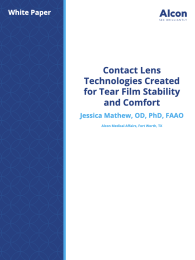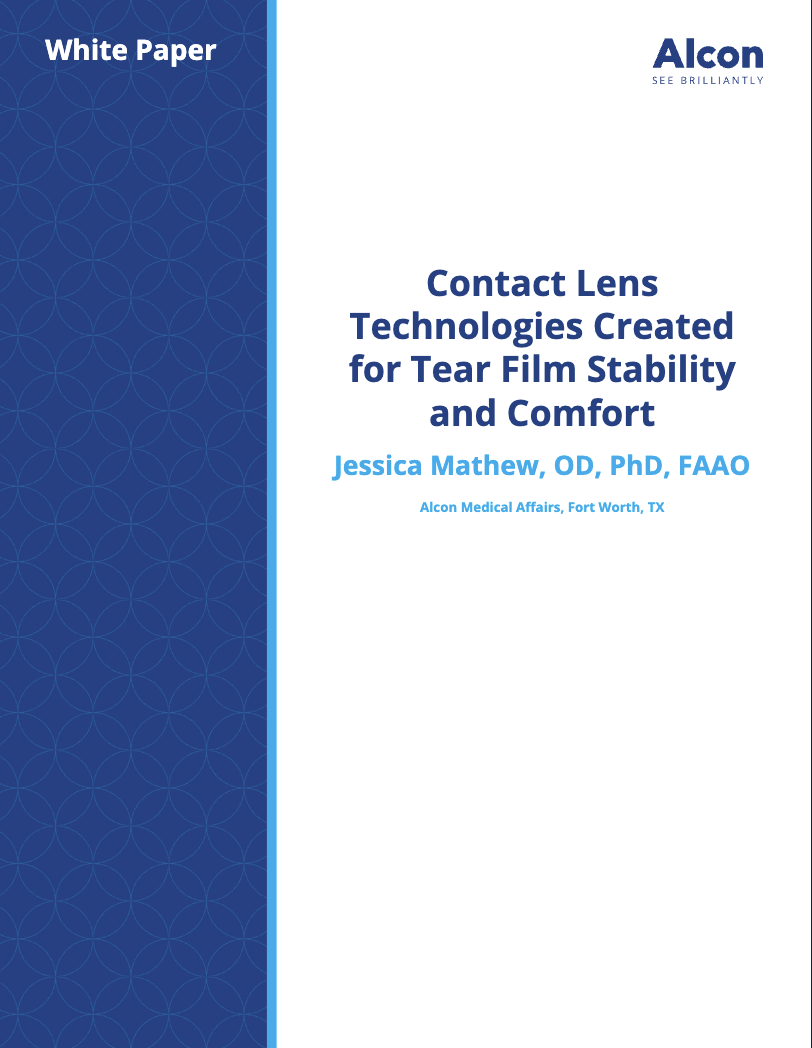

More than 140 million people wear contact lenses worldwide (40.9 million US), and it is estimated that up to 50% of contact lens wearers experience lens discomfort.1-3 When contact lens discomfort (CLD) persists, patients likely reduce the number of hours per day that they wear their lenses or begin wearing them less frequently and ultimately may discontinue lens wear altogether.2,4,5 Several reports have shown that CLD is the primary reason why patients drop out of contact lenses.2,6,7
Patients describe CLD in different ways: lens dryness, irritation, discomfort, fatigue, etc. While these symptoms often increase as the day goes on, they typically disappear once the contact lens is removed. Although patients often describe CLD as ‘dryness’, it is separate from dry eye disease and has been defined as “episodic or persistent adverse ocular sensations related to lens wear, either with or without visual disturbance, resulting from reduced compatibility between the contact lens and the ocular environment, which can lead to decreased wearing time and discontinuation of contact lens wear”.8
While it is difficult to identify a direct cause for CLD, tear film stability is consistently recognized as a key factor.9,10 Therefore, understanding the tear film and taking steps to maintain the normal function of the tears, while in the presence of a contact lens, is critical.

